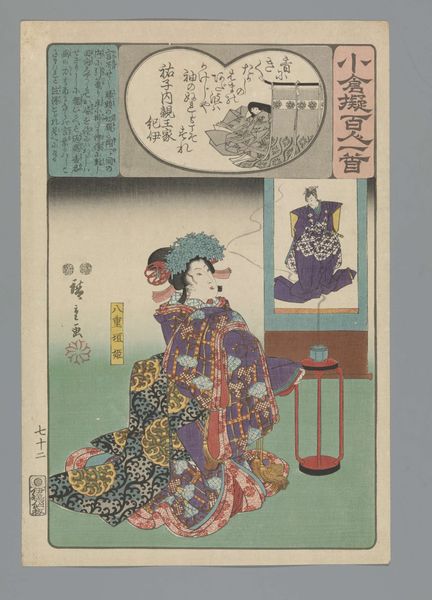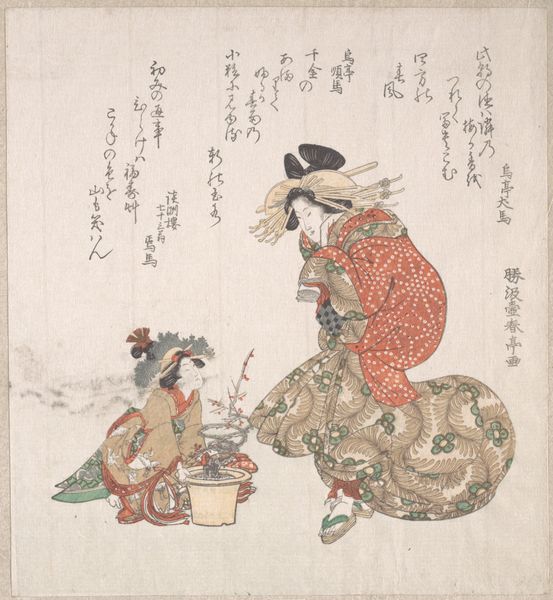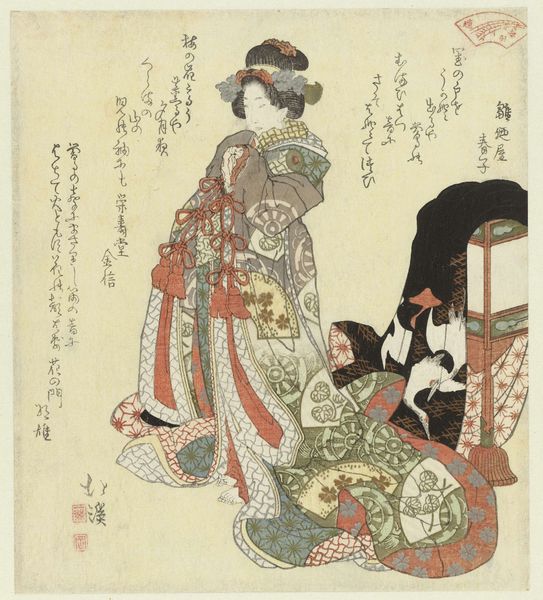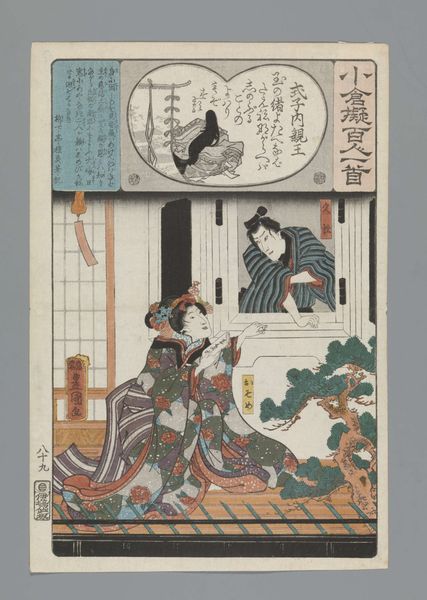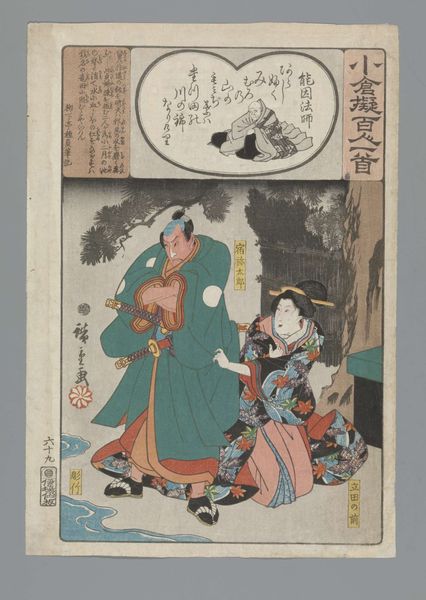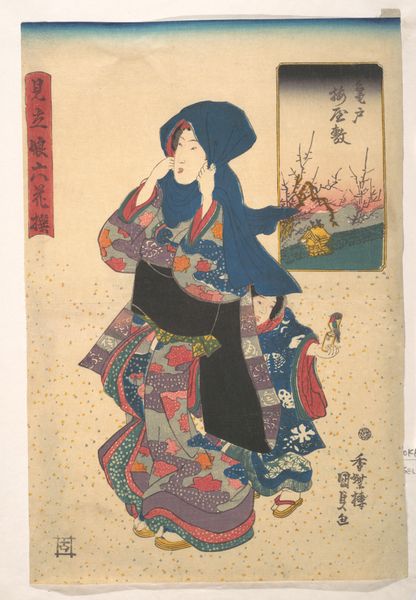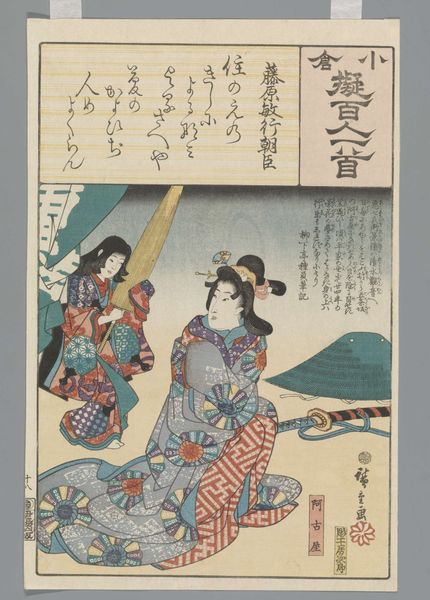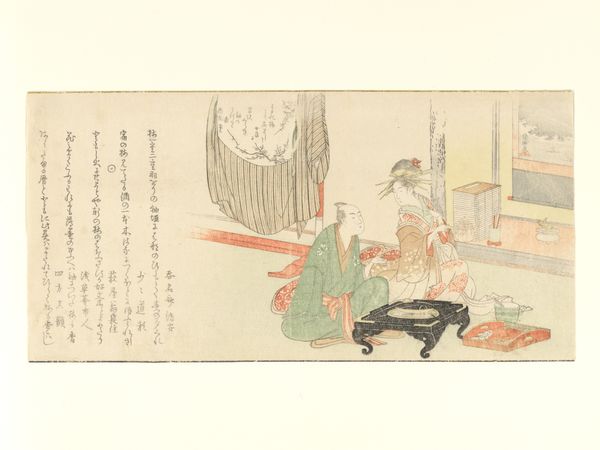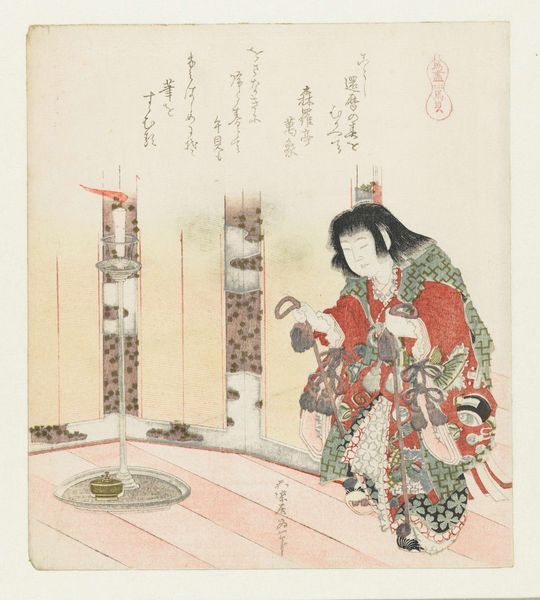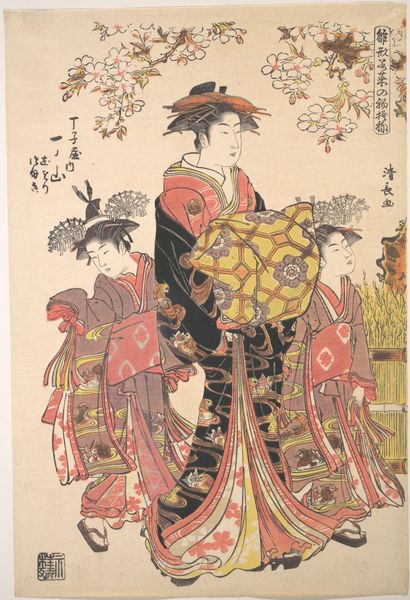
Dimensions: height 350 mm, width 238 mm
Copyright: Rijks Museum: Open Domain
Ogata Gekko created this woodblock print, Optocht, at the turn of the 20th century. Dominating the composition is a procession, brimming with symbols ripe for interpretation. Observe the peony motif, emblazoned on a large fan. In Japanese art, the peony symbolizes wealth, honor, and nobility. It also speaks to a certain transience, a fleeting beauty. Think of Botticelli’s Venus, surrounded by roses, emblems of love and beauty. The rose, like the peony, reminds us of life's ephemeral nature. The lantern, carried by a figure at the right, glows with symbolic weight too. It is reminiscent of the 'spirit lanterns' used in Obon festivals, guiding ancestral souls. These symbols aren't static; they evolve, intertwine. They are vessels of cultural memory passed down through generations, each reshaping their significance, according to the collective subconscious. The emotional power of the image lies in its cyclical nature. These motifs resurface, evolve, and find new resonance, proving that history is never truly in the past.
Comments
No comments
Be the first to comment and join the conversation on the ultimate creative platform.

